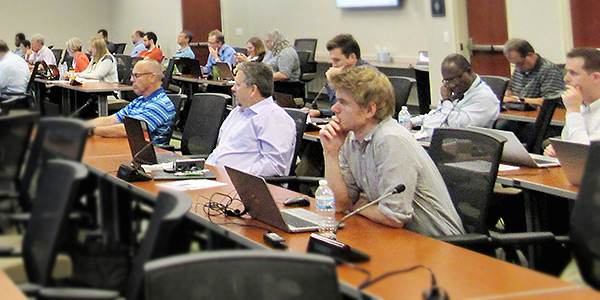By Amanda Durish Cook
A new stakeholder-led proposal would require MISO load-serving entities to develop a 20-year base load forecast that includes monthly predictions for energy and non-coincident peaks.
The Coalition of Utilities with an Obligation to Serve in MISO (CUOS), an ad hoc group of MISO utilities and regulators, advanced the plan after the RTO earlier this month requested stakeholder ideas for improving load forecasting.
LSEs must currently provide just two years of monthly forecast data to MISO, but WPPI Energy economist Valy Goepfrich said long-term forecasts the RTO obtains from the Purdue University State Utility Forecasting Group — which are compared against LSE projections — so far “have confirmed the validity of the LSE base load forecasts.”
Under the CUOS plan, the LSEs’ base load forecasts would be applied to MISO’s base case Transmission Expansion Plan (MTEP) future, the “limited fleet change” future. The other futures include a continued fleet change future, an accelerated fleet change future and a future in which distributed and emerging technologies become more widely used in the MISO footprint.
“The CUOS proposal is leveraging the forecasts that LSEs already develop,” Goepfrich explained during a Sept. 26 Planning Advisory Committee meeting. She said the proposal is more cost-effective than continuing to pay Purdue for independent load forecasting.
The CUOS proposal would also direct LSEs to provide data on transmission losses, as well as demand served by energy efficiency planning resources, demand resources and behind-the-meter planning resources. LSEs would not be required to provide numbers on demand served by energy efficiency programs and other resources not classified as planning resources. Goepfrich said MISO can continue to use consulting firm Applied Energy Group for distributed resource data predictions in the three other MTEP futures.
The Parable of the Ox

Goepfrich referenced an address at this year’s MISO Market Symposium in which RTO Director Trip Doggett cited “The Parable of the Ox,” a story included in James Surowiecki’s book “The Wisdom of Crowds.” The story recounts how in 1906, statistician Francis Galton studied a competition to guess the weight of an ox at a country fair, observing the average guess was accurate to within 1% of the actual weight of the 1,200-pound animal. Doggett used the story to illustrate that the RTO’s large stakeholder community is needed to lend their ideas about what shape the future grid should take.
Goepfrich said the story also applies to load forecasting. An average of many forecasts, she said, will be more helpful than a forecast designed by a few individuals.
“It doesn’t make sense to have a forecast that is divorced from the LSEs’ forecasts,” Goepfrich said. She added that MISO should be more transparent about the “behind the scenes” analyses that might lead it to prefer an independent load forecast over one originated by LSEs.
MISO Director of Planning Jeff Webb said the RTO will evaluate and respond to the load forecast proposal. The RTO committed to soliciting stakeholder opinions on load forecasting after taking a break this summer from ordering more independent load forecasts from Purdue. (See MISO Looks to Members for Load Forecasting Ideas.)
Facing widespread stakeholder disapproval, MISO in June abandoned a proposal to have its 140-plus LSEs annually assemble four distinct 20-year load forecasts with hourly load shapes to align with each of the four futures in the annual MTEP. (See MISO Nixes LSE Load Forecast Plan.)




